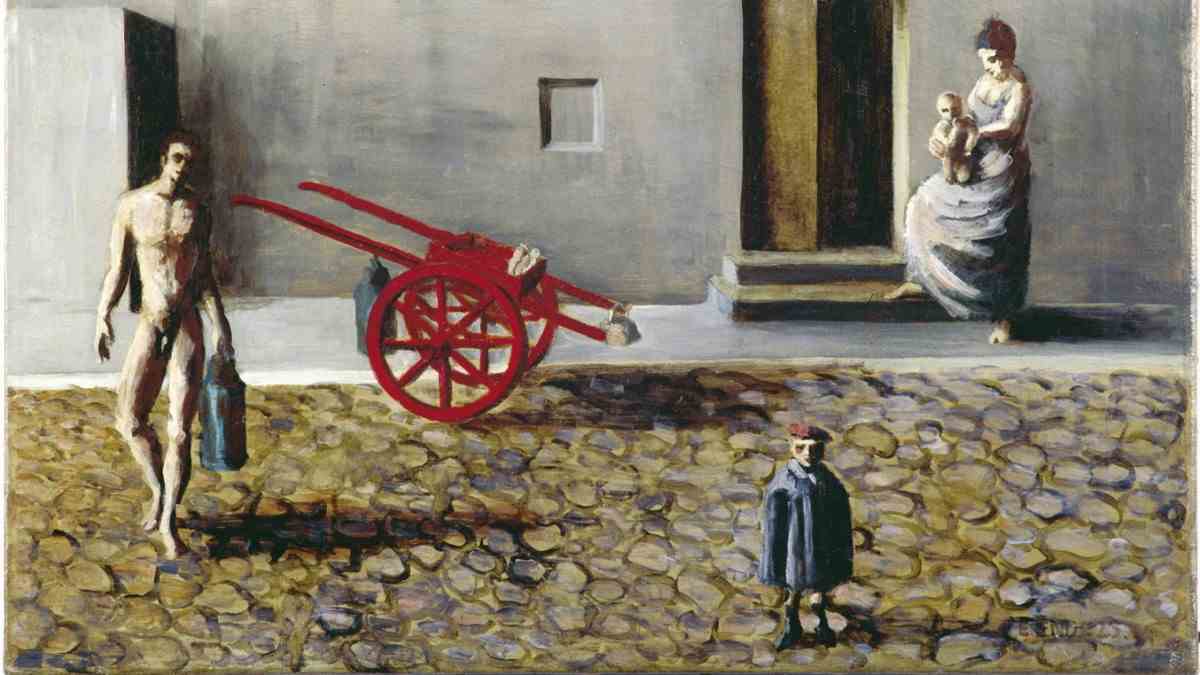ismaning – It’s probably because of his son that not everyone has an ad hoc idea of what Edgar Ende is all about. This artist, who was born in Hamburg-Altona and approached the surrealism that was flourishing in France around a hundred years ago, without having any contact with its representatives, was interested in how modern and varied his interests were. So actually reason enough to know Edgar Ende as a pioneer of German surrealism. But Michael Ende is a name that outshines many things. The film adaptations of his youth books were box-office hits. “The Neverending Story” was filmed in the Bavaria film studios in the mid-1980s. Even today, children in Grünwald can ride like the heroes of the novel on the back of the lucky dragon Fuchur through Phantásia, the land of the loach and night owl, the ivory tower, the howling forest, the swamps of sadness. Flying over the land that Michael Ende saw threatened by “nothing”.
His father Edgar Ende, the visual artist, is unfortunately not as well known as he deserves, says Gisela Hesse, director of the gallery in the Ismaning palace pavilion. “Edgar Ende (1901 to 1965). Oil paintings and drawings” is the title of the exhibition, which is presenting his works there until July 3rd. The works come from the artist’s estate, which is being looked after by Roman Hocke, the chairman of “Labyrinthe”, the society for fantastic and visionary arts. Fritz Hörauf, who curates the exhibition in Ismaning, arranged the contact. And you only have to look around the gallery to realize how visionary and fantastic this Edgar Ende really was: the drawing of a foot blocking the sun between striped rocks on the beach. A blind storyteller. A naked milkman. A diver diving straight into the water, his body covered in an intricate network of arteries and veins. A horse balancing a jug. And then “The Great Hermaphrodite”, the being of two sexes, which was painted in oil against a mountain-lake-green background at the end of 1960, with static breasts and strong legs. Sometimes bizarre pictorial worlds, from which the young Michael Ende probably not only drew inspiration, but also the realization that imagination knows no bounds. If you dare.
“The Milkman” is one of the paintings by Edgar Ende that will be shown in Ismaning.
(Photo: VG Bild Kunst)
And Edgar Ende had the courage: he had trained as a decorative painter, but was also interested in alchemy and the esoteric, in religion and philosophy, dealt with Sigmund Freud and the interpretation of dreams and the teachings of Rudolf Steiner. Not one of those wild creative people, one would say today, who always comes up with an even crazier idea. Rather the level-headed type. “I’m going to make sketches,” Michael Ende quotes his father as saying in a text. He then withdrew to his darkened studio, wanted to be empty, strip off all thoughts, switch off all imagination, until a visual idea arose from within. After that he didn’t start painting right away. Years could pass before a sketch became an oil painting.
At the beginning of the thirties Ende then had to defend himself against a threat that was just as devastating for his generation of artists as “the nothingness” was for Phantásia, which draws its destructive power from people’s increasing lack of imagination. The young artist had just gained some notoriety, taking part in the exhibition “European Contemporary Art” in the Hamburger Kunsthalle around 1927, when the Nazis declared his works degenerate and refused him access to paper and paint. Ende continued to paint anyway, procured the material elsewhere. Maybe through artist friends, Gisela Hesse suspects.
“The diver, the reflection” Edgar called this picture.
(Photo: VG Bild Kunst)
He found a way. There is hardly any other way of explaining Ende’s productivity. He had created an estimated 1200 works when he died in 1965 after a heart attack. Only a little has been preserved. A number of works were destroyed in a bomb attack on Munich, and the National Socialists also confiscated some, according to Hesse. The oil painting “The Bound Saturn” was not created until a few years after the war, at a time when Ende was taking part in the Biennale and was elected artistic director of the Great Art Exhibition in the Haus der Kunst. Unlike Goya, who recorded in 1820 how the god identified with Kronos devours one of his children with a mad look, Endes Saturn has his hands tied behind his back. His head is covered, children are lying around him, sleeping peacefully. Who knows: maybe they are even dreaming. Of a world where the mountains are striped and horses balance jugs on their backs.

